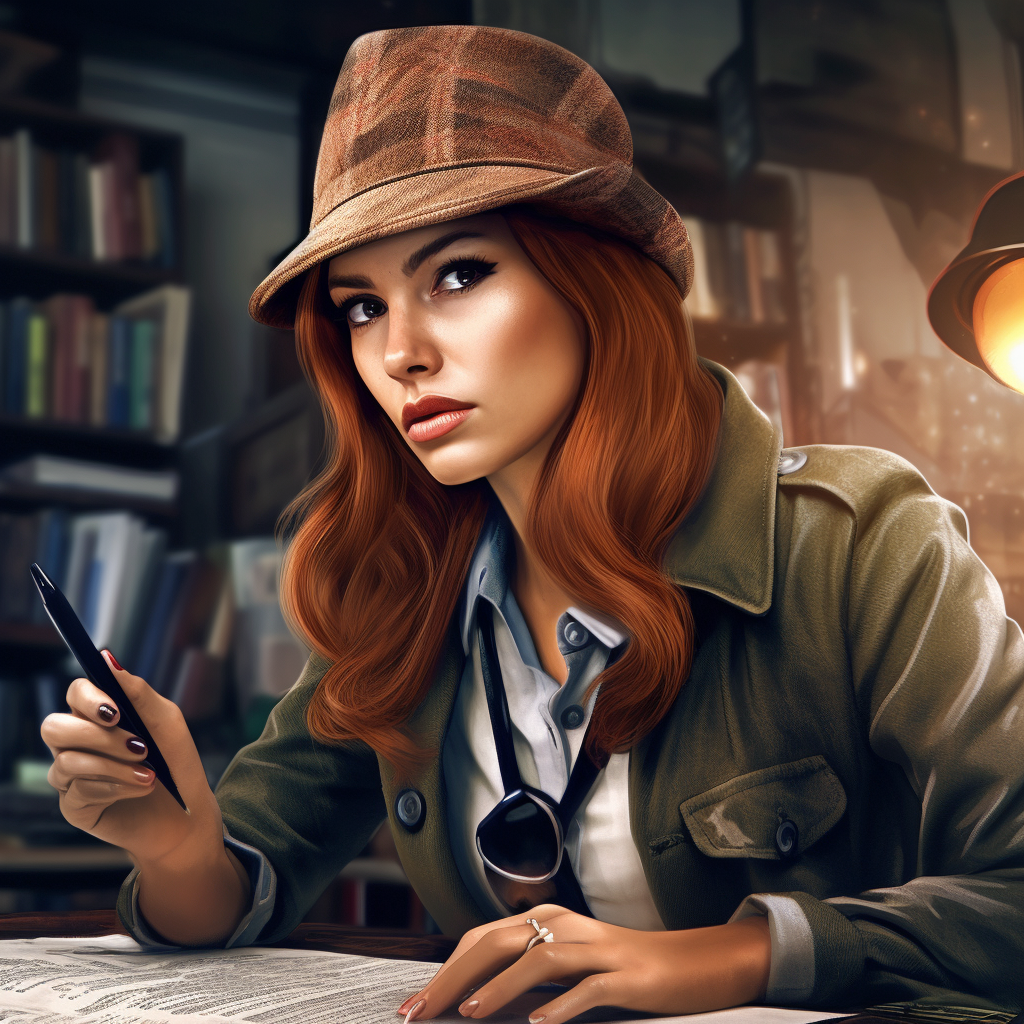Creating a content marketing strategy can be overwhelming. There are so many things to consider – from the types of content you will create, to who your target audience is, and where you will promote your content.
Content marketing is not a new concept, but it has become more important in recent years as the digital landscape has changed. In the past, companies could rely on interruptive advertising to reach their target markets. But now, with so many options and sources of information available, consumers have become much more selective about what they pay attention to. As a result, companies have had to change their approach, and content marketing has become a key part of that.
So what exactly is a content marketing strategy? Put simply, it is a plan for using content to achieve your business goals. It should take into account what you want to achieve, who your target audience is, and what kind of content will resonate with them. It should also consider where you will promote your content and how often you will create new content.
A content marketing strategy is essential for any business that wants to use content to drive growth. Without one, your efforts are likely to be scattered and ineffective. But crafting a successful content marketing strategy doesn’t have to be complicated or time-consuming.
What is content marketing and why should you care?
If you’re like most people, the term “content marketing” probably doesn’t mean much to you. But even if you don’t know what it is, there’s a good chance that you’ve been affected by it. Content marketing is a strategic approach to marketing that focuses on creating and distributing valuable, relevant, and consistent content to attract and retain a clearly defined audience.
Why should you care? Because content marketing is an incredibly effective way to reach your target market. In today’s noisy and overcrowded marketplace, it can be difficult to cut through the clutter and get your voice heard. But with content marketing, you can break through the din and reach your target market in a way that is both meaningful and engaging.
So if you’re not already familiar with content marketing or content strategy, now is the time to learn more. It could very well be the key to success for your business.
What is a content marketing strategy and why do you need one?
Content marketing is a strategic approach to marketing that focuses on creating and distributing valuable, relevant, and consistent content to attract and retain a clearly-defined audience — and, ultimately, to drive profitable customer action. In other words, it’s a way of using informative, entertaining, or even inspirational articles, videos, podcasts, etc. to improve your brand’s visibility and build relationships with your customers.

So why do you need a content marketing strategy? Well, without one, your content marketing efforts are likely to be scattered, inconsistent, and ineffective. A well-crafted content marketing strategy will help you define your goals and objectives, determine which types of content will best help you achieve those goals, figure out who your target audience is and where they consume their content, and create a schedule and process for producing quality content on a regular basis. In other words, it will help ensure that your content marketing efforts are strategic, targeted, and efficient — which is exactly what you need if you want to see results.
The four elements of a content marketing strategy
A successful content strategy should contain four key components for success: the positioning of the company’s name, owned market values, business strategy and business case. How can content marketers incorporate all these elements in the right way?
Positioning the Company’s Name
The first step is to make sure that your content marketing strategy is aligned with your overall business goals. What do you want to achieve? How can content marketing efforts help you get there? Once you have a clear understanding of your goals, you can begin to position your company’s name in the market. This will involve creating a unique value proposition and differentiating your brand in the marketplace.
Owned Market Values
The second element is to create content that is in line with your company’s core values. What does your company stand for? What are its guiding principles? Your content should reflect these values and help you communicate them to your target audience.

Business Strategy
The third element is to align your content marketing strategy with your overall business strategy. What are your company’s goals? What are its key objectives? Your content marketing efforts should be focused on helping you achieve these goals.
Business Case
The fourth and final element is to build a strong business case for your content marketing strategy. This means outlining the costs and benefits of your content marketing efforts and demonstrating how they will help you achieve your overall business goals.
By incorporating these four elements into your content marketing strategy, you can ensure that your content marketing efforts are strategic, targeted, and effective. And that’s exactly what you need to grow your business.
Seven Steps to Creating a Complete Content Strategy Plan
Long-term plans help you focus on business objectives, anticipate challenges and use the resources efficiently. By taking the time to map out your content marketing strategy, you’ll be able to focus on your business objectives, anticipate challenges and use your resources more efficiently. Plus, you’ll be able to deliver your content in a more strategic and cohesive way. Taking these seven steps can be useful for developing and delivering your content strategy step by step.
Audit Your Existing Content
As a content marketer, you’re always on the lookout for new ideas and strategies to improve your results. But sometimes the best place to start is right in front of you – with your existing content. That’s why it’s important to periodically audit your content to see what’s working, what’s not, and where you can make improvements.

When auditing your content, there are a few key factors to consider: strategic alignment, engagement levels, and ROI. First, take a close look at how your content aligns with your overall goals and objectives. Is it helping you achieve your strategic objectives? Next, assess engagement levels by looking at metrics such as page views, time on page, social shares, and comments. Finally, evaluate ROI by calculating how much revenue or leads your content has generated. Check out your search engine results pages, website traffic, content formats, and how you deliver content.
By taking the time to audit your existing content, you can get a better understanding of what’s working and where you need to make adjustments. As a result, you’ll be able to fine-tune your content marketing strategy for even better results.
Set Content Marketing Goals
Traditional goal-setting approaches can be rigid, which can make it difficult to establish realistic targets. However, flexibility is crucial in becoming more responsive in changing environments. The CLEAR Framework can help you become more strategic in your content marketing, and therefore more responsive to change.

If you’re like most people, the phrase “content marketing” probably conjures up images of blog posts and social media posts. And while it’s true that those are both important pieces of the content marketing puzzle, they’re just a small part of the bigger picture. In order to really be successful with content marketing, you need to have a strategic plan in place. That’s where the CLEAR Framework comes in.
The CLEAR Framework is a strategic content marketing framework that helps businesses create and execute a content marketing strategy that is aligned with their overall goals. The framework has five key components:
Customer: Who are you trying to reach with your content?
Location: Where are your customers consuming content?
Engagement: What type of relationship do you want to build with your customers?
Amplification: How will you amplify your message to reach more people?
ROI: What are your goals for this content marketing campaign?
By thinking about each of these components, you can develop a strategic and effective content marketing plan that will help you achieve your goals. So don’t just think about blog posts and social media posts when it comes to content marketing – think about the bigger picture. Use the CLEAR Framework to develop a comprehensive content marketing strategy that will help you achieve your business goals.
Determine your audience
Content marketing is a strategic marketing approach focused on creating and distributing valuable, relevant, and consistent content to attract and retain an audience — and, ultimately, to drive profitable customer action.

Here are a few tips to help you determine your audience:
1. Look at your existing customer base. Chances are, they share certain characteristics that make them ideal customers for your business. Use those characteristics to help you identify other potential customers.
2. Consider who your competition is targeting. If you’re not sure who your target market is, take a look at who your competition is targeting. You can learn a lot by studying their marketing strategy.
3. Use data to your advantage. There’s a wealth of data available online, and it can be a valuable resource for helping you determine your target market. Use Google Analytics and other tools to gather data about the people who visit your website or engage with your brand online. Look at your website visitors and user behavior on your website and social media pages.
4. Know thyself. It’s important to have a good understanding of your own business and what you have to offer before you can start targeting a specific audience. What are your unique selling points? What sets you apart from the competition
Find Relevant Topics and Keywords
Now that you know who your target audience is and what they’re interested in, it’s time to start developing content ideas. One of the best ways to do this is by using keyword research. Keyword research will help you understand what people are searching for on the internet, and how those searches can be related to your business and improve your search engine results.
Here are a few tips for doing keyword research:
Use Google’s Keyword Planner tool to get started. This tool will help you understand how people are searching for your products or services online. You can also use a tool like SEOSleuth that has tools such as keyword research, domain and page authority, search results analysis, content analytics, competitive research, and more.

Look for long-tail keywords. Long-tail keywords are specific and tend to be less competitive than short, general keywords. They’re also more likely to convert since they’re specific to what people are looking for.
Use keyword research tools like Google Trends and Moz’s Keyword Explorer to see how keywords are being used over time. This can help you understand which topics are popular right now, and how those trends might impact your business.
Think about the intent behind the search. When people are searching for something on the internet, they’re usually looking for information, products, or services. Keep that in mind as you research keywords and develop content ideas.
Make a list of relevant topics and keywords. Once you’ve done your research, make a list of all the relevant topics and keywords that you can use in your content marketing strategy.
Plan Content Production
Before starting the production process, consider why you’re creating this material. Ensure you cover each stage of the customer journey and develop lasting connections with the client and their brand.
Awareness stage – These pieces typically focus on questions you have at the bottom of the funnel to become accustomed and aware of your business problem or need. This may also include material describing and entertaining the message of your brand. Thought leadership content works.
Consideration stage – Now that you are aware of your business problem or need, content should focus on evaluating options to solve this problem. Is your product the right fit? How does it compare to others in the market?
Purchase/Decision stage – The final stage is when a decision has been made and content should be focused on getting the sale. This is where you include content like product demos, free trials, coupons, or other content that will help push the reader to buy your product.
Use an editorial calendar to organize your work
An editorial calendar is basically a tool that helps you plan and organize your content marketing efforts so that you can be strategic about what you’re creating and publishing. By mapping out your content plans in advance, you can ensure that your content marketing is aligned with your overall business goals and objective. Not to mention, it can also help you keep track of deadlines and make sure that your content is being published on a regular basis.

A content calendar can be developed on an actual calendar like Google Calendar, on paper, in a notetaking app like Evernote, or in my preferred app, Notion.
Your editorial calendar should include compelling content delivered in a variety of formats to generate leads. It should include the elements needed for creating content as well as your social media strategy. It should include where you plan to publish content, the visual content for each platform, and helpful links.
Create SEO-Friendly Content
Organic results are responsible for a large chunk of web traffic. In fact, according to some estimates, as much as 35% of web visitors come from organic search results. This makes search engine optimization (SEO) a very important consideration for content creators.

When you have a piece of content that you want to optimize for the search engines, you can use digital tools like SEOSleuth to help you with the process. This assistant will help you to ensure that your article is optimized for the best possible ranking in the search results. Your SEO efforts will pay off.
Getting in touch with a company like Find the Write Way is a good idea if you need help getting started with SEO and content optimization.
Diversify your content
Content is King. But what often gets lost in the shuffle is that not all content is created equal. To truly capture and engage your audience, you need to diversify your content. That means creating a mix of content types that appeal to all your different audiences. Not everyone wants to read a long-form blog post, but everyone loves a good meme. By creating a variety of content, you can make sure that there’s something for everyone. And when everyone is happy, you’re sure to see an increase in engagement across all your channels. So go ahead and mix things up – your audience will thank you for it.
Consider the buyer’s journey, share customer satisfaction posts, use several content channels as well as your own site, create opportunities for user generated content on social media.

3 Examples of High-Converting Content Marketing Strategies
If you’re putting out low-quality, boring content, don’t expect to see many results. However, if you’re producing high-converting content – stuff that’s interesting, informative, and relevant to your audience – then you can expect to see some serious results.
So what are some examples of high-converting content marketing strategies? Here are three to get you started:
Create helpful blog posts: People are always searching the internet for answers to their questions. If you can provide them with helpful, relevant, and engaging blog posts that answer those questions, you’ll be well on your way to attracting new customers. Just make sure to include a call-to-action (CTA) at the end of each post so people know how to get in touch with you.

Develop an informative e-book: A well-written and informative e-book can be an excellent way to attract new leads. Be sure to include a CTA so readers know how to download or purchase your e-book.

Produce quality video content: These days, video is one of the most popular types of content online. And for good reason – it’s engaging, informative, and easy to consume. If you want to capture your audience’s attention, start creating videos with quality content. Again, don’t forget to include a CTA so people know how to get in touch with you.

Conclusion
Creating a content marketing strategy can seem daunting, but it’s important to remember that you don’t have to do it all at once. By taking things one step at a time and planning ahead, you can create a content marketing plan that is both effective and aligned with your overall business goals. In addition, make sure to optimize your content for SEO and include a mix of content types to appeal to all your different audiences.
By following these tips, you’ll be well on your way to developing a content marketing strategy that will help grow your business.
Do you have any questions? Leave a comment below and I will be happy to answer them!






